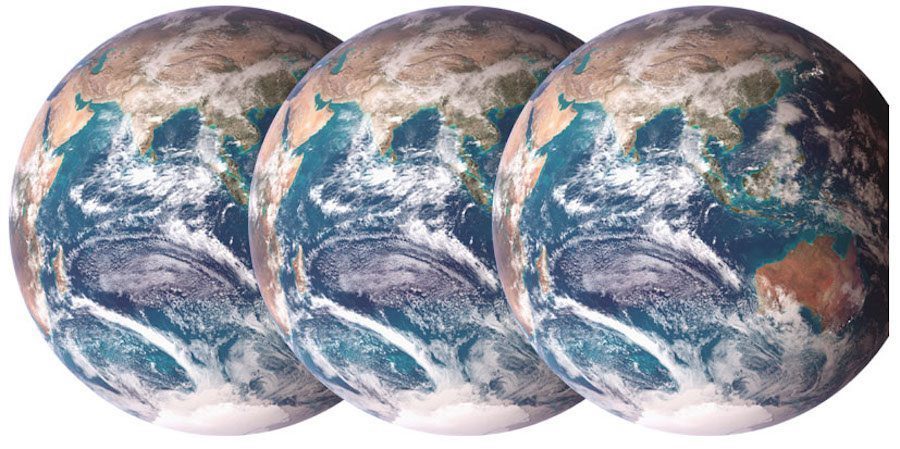
Sometimes life gets away with us and before we know it, leading an environmentally-friendly lifestyle slips lower down the priority list. However, the effects of climate change are more upon us now than ever before and we no longer have time on our side.
The good news is that where we spend a lot of time, our homes, are entirely within our control, and the more we believe that, the greater we will be able to contribute to helping the planet. Therefore spending a little time assessing how we’re currently running them is absolutely possible and reasonable. Take the following steps post-assessment to make sure you’re not someone who is contributing to climate change in ways that are entirely avoidable.
1. Power Down Your “Idle Load”
Have you thought about how many active energy outlets you have running in your house? Well, in total, your house will likely be powering around 65 separate devices at any one time – even when the devices are not switched on.
This “idle load,” across all the homes in the US amounts to the output of over 50 major power plants, so don’t be complacent about fully charged devices, rarely used devices and those on standby. Unplug wherever you can, or plug your devices into power strips or timers.
2. Go Plant-Based
Meat eaters consume over 7,000 animals in one lifetime: 11 cows, 27 pigs, 2,400 chickens, 80 turkeys, 30 sheep and 4,500 fish. Each animal and its by-products requires a huge amount of land, fuel and water to reach the diner’s plate, so the simplest way households can stop contributing to climate change is by going plant based or at least eating less meat.
3. Cut Down on Water Waste
While following a vegan lifestyle will reduce water you consume indirectly, you can also save water directly in your own household. Saving water actually reduces your home’s carbon footprint as it reduces the energy expended to pump, heat and treat water. Easy ways to save water include taking shorter showers, moving to WaterSense fixtures and limiting your baths.
4. Reuse, Recycle and Compost
We use so much “stuff” that it turns out we can even end up throwing more of it away. This applies to packaging, food, electronics, and many more. This all lands up in a landfill, decomposing and releasing harmful gases such as methane.
Think before you throw something out – can you repurpose it for something else in your household? Can you “upcycle” it or sell it? If not, make sure you recycle it as appropriate and be sure to put organic waste into composters. Nitrogen is harnessed in a useful form in this process as opposed to being released into the atmosphere as methane.
5. Compact Fluorescent Lamps
It most likely will not be the first time you’re hearing this, but energy-efficient light bulbs consume 80 percent less energy when compared to standard incandescent – while they’re more expensive to buy at the outset, in the long run, they are far cheaper. If every home in America replaced only five bulbs with compact fluorescent lamps, greenhouse gas emissions would decrease by as much as off-roading 10 million cars.
6. Energy Star Your Appliances
Just like your light bulbs, your white appliances such as refrigerators, freezers, washing machines and other electronic devices all consume electricity which in turn causes greenhouse gases. If your appliances are getting on (think five years or more), it’s time to replace them with Environmental Protection Agency approved Energy-Star rated products. These treasures are energy efficient and refrigerators also use fewer refrigerants.
7. Take a Long, Hard Look at Your HVAC System
As HVAC systems typically use energy in the way of natural gas or electricity, unfortunately, you are indeed making your home non-sustainable. Almost 90 percent of US homes have air-conditioners, which in turn release over 100 million tons of carbon dioxide every year, and contain refrigerants. The same goes for heating appliances. While you may not have the ability to fully replace your home heating system, you can save money and reduce climate change effects by supplementing with active solar heating.
8. Hold a Climate Change Awareness Neighborhood Brunch
Talking with your friends, family, and neighbors are sure-fire ways to spread the benefits of living sustainably. And moreover, it reinforces the importance of curbing your contribution to climate change.
Holding neighborhood brunches or coffee mornings as info-sessions are wonderful ways of living an environmentally-friendly way of life with your community.
9. Go Full Throttle on Renewable Energy
Opt for a utility company that has been Green-e Energy approved, as it will most likely be generating at least half of its power from wind and solar if so. If this is unavailable to you in the meantime, scrutinize your electricity bill and assess how else you could be supporting renewable sources.
10. Have You Heard of Weatherizing?
HVAC systems were discussed above, but did you know that building heating and cooling are one of the biggest uses of energy? Turn your space into a tighter envelope by sealing up cracks, spaces in windows, and insulating your home to ensure you’re not wasting energy.
There are so many ways we can lessen our home’s contribution to climate change and many of these ways support companies who are also actively changing the world around us as we speak. Do some good today and don’t be complacent about how you run your home.


